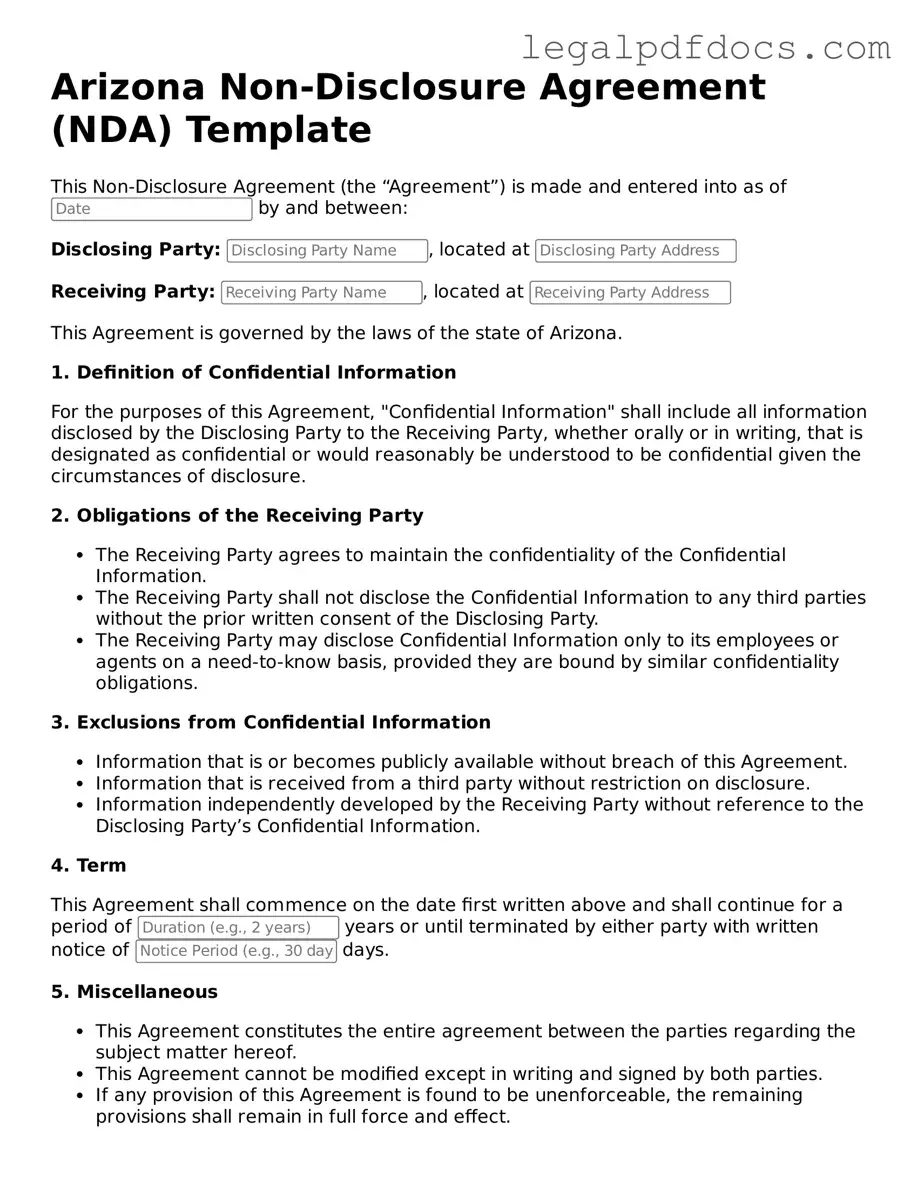In the dynamic landscape of business and personal relationships, confidentiality plays a crucial role in safeguarding sensitive information. This is where the Arizona Non-Disclosure Agreement (NDA) form comes into play, serving as a vital tool for individuals and organizations alike. Designed to protect proprietary information from being disclosed to unauthorized parties, this legal document outlines the terms under which confidential information can be shared. Key elements of the Arizona NDA include a clear definition of what constitutes confidential information, the obligations of the parties involved, and the duration of the confidentiality obligation. Additionally, the form often specifies exceptions to confidentiality, such as information that becomes public through no fault of the receiving party. By establishing a mutual understanding of confidentiality expectations, this agreement fosters trust and encourages open communication, allowing parties to collaborate without the fear of sensitive information falling into the wrong hands. Whether you are a business owner looking to protect trade secrets or an individual sharing personal information, understanding the nuances of the Arizona Non-Disclosure Agreement is essential for navigating the complexities of confidentiality in today's interconnected world.
